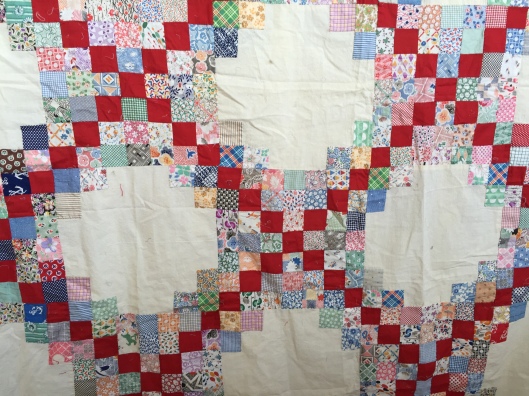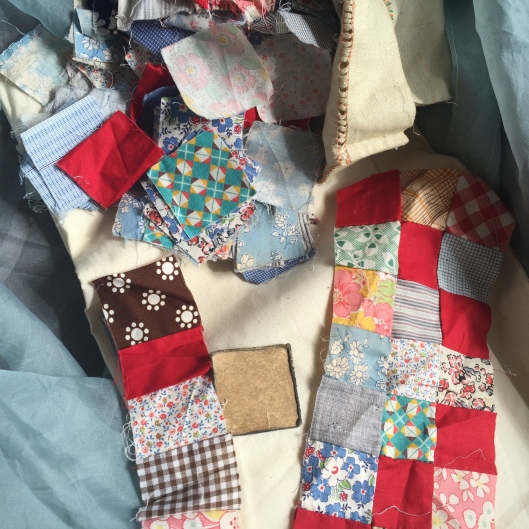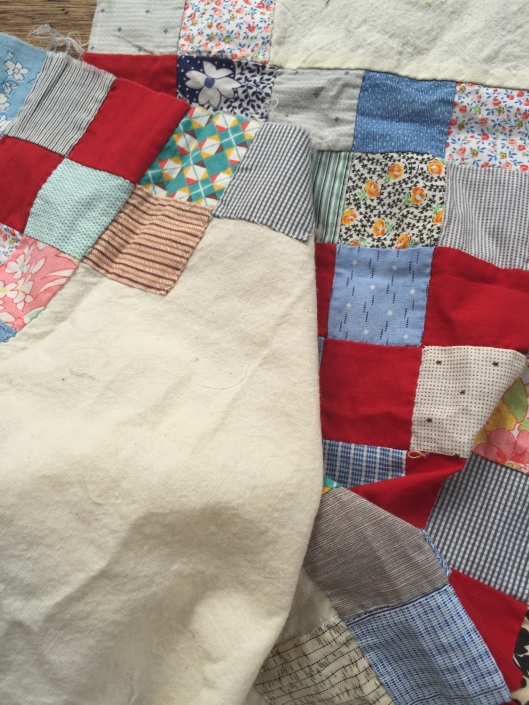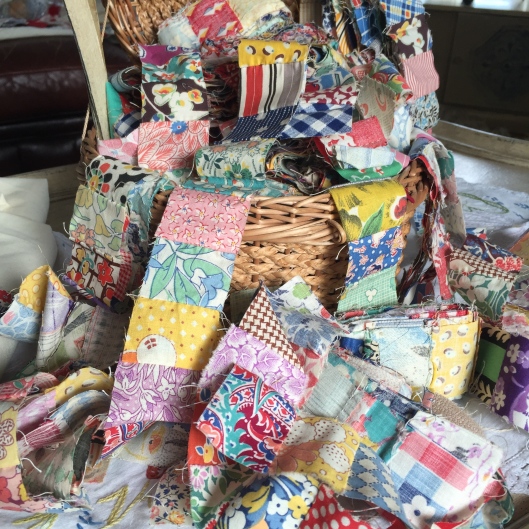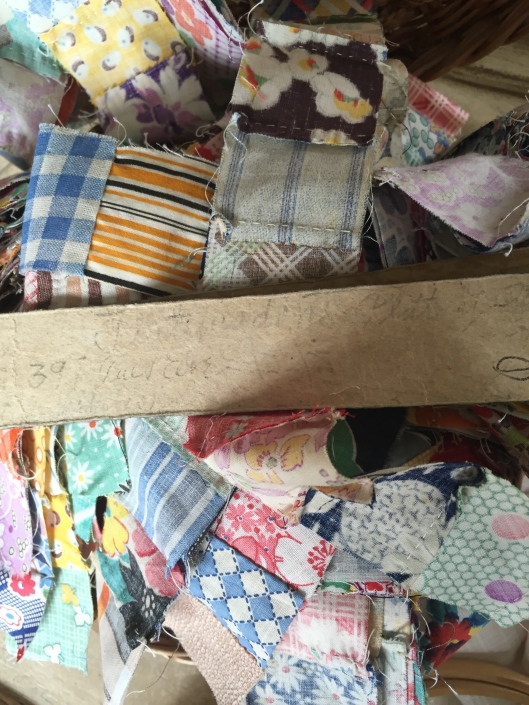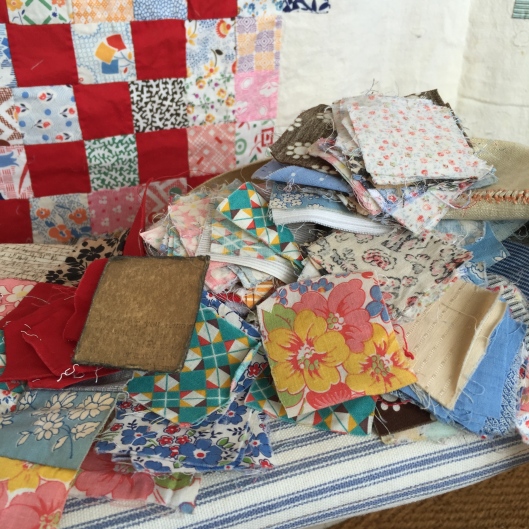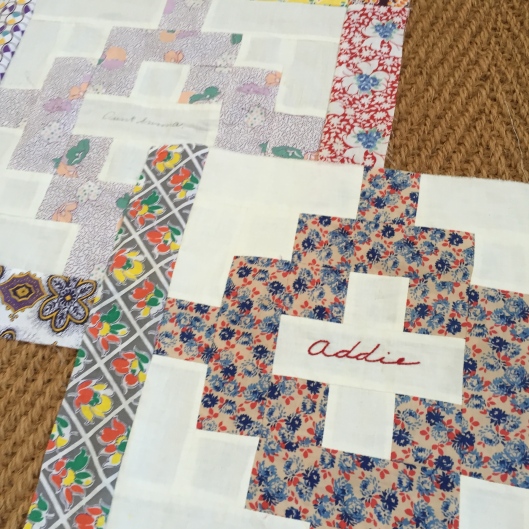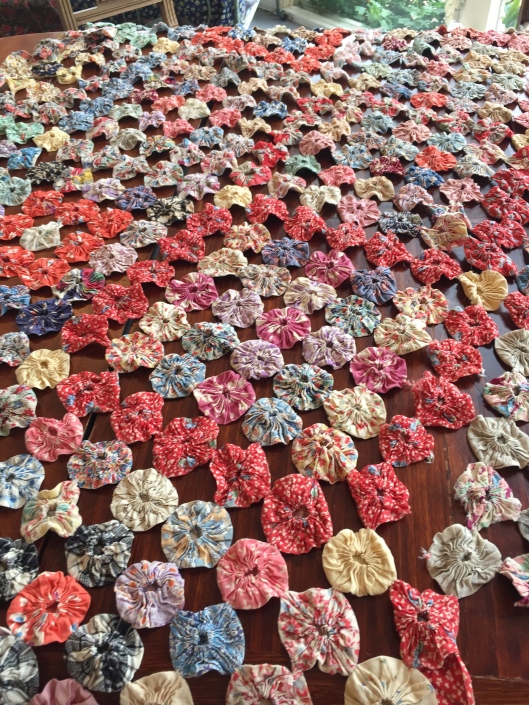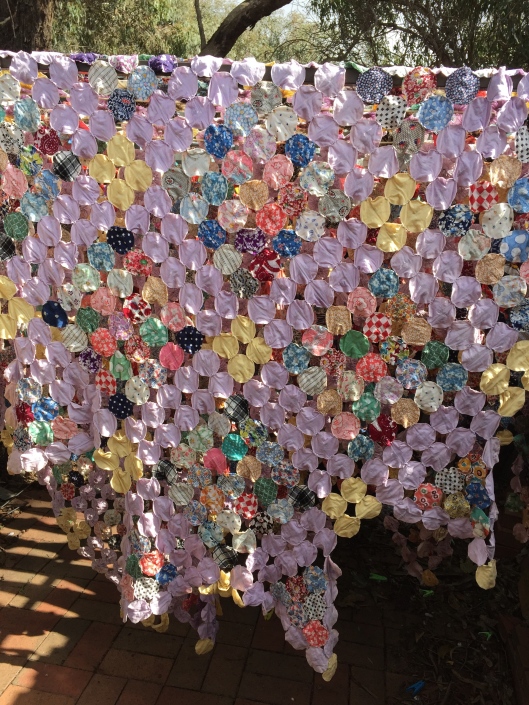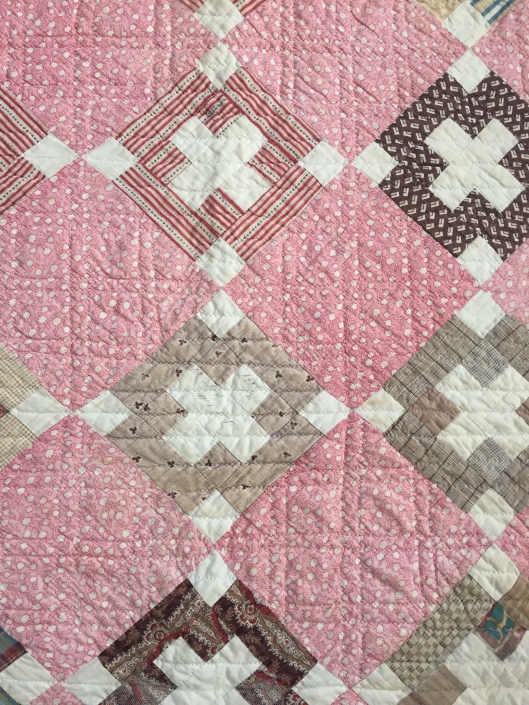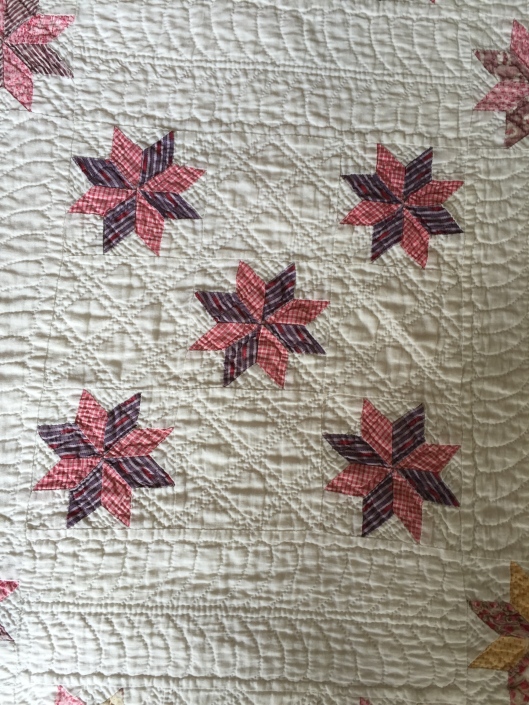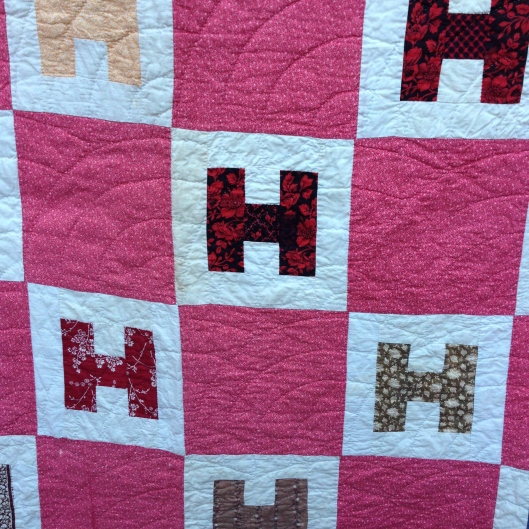Tags
1930s quilts, Australian Quilts, Bush Quilts, Depression era, Fabric Study, Hard times, old quilts, quilt collections, Wagga Quilts, Waggas, Woollen

Wagga quilts are an Australian style of quilt born out of hard times and limited resources.
Originally waggas or bush quilts were a hessian sack or chaff bag filled with anything that would provide warmth. They may have been covered with an outer cotton fabric.
During the Depression Era waggas pieced from woollen tailor’s samples, remains of worn out clothing and dressmaking scraps emerged. The woollen fabrics provided much needed warmth during a period when houses were unheated. My mother recalled her mother making heavy, woollen quilts from tailor’s samples. These were used by her brothers who slept on the back verandah. They were a large family and very poor. I’m sure they appreciated their waggas.
I purchased my Wagga on eBay. It was found at a church sale in Charleston, Lake Macquarie, New South Wales. It is in very good condition. I think it may have been placed in a cupboard and forgotten until the church had a big clean up. It appears never to have been used.

Reverse of Wagga
The quilt is double sided and has an inner layer. It is very heavy. The quilt is in very good condition. There is some machine stitching used to hold the three layers together. There is no binding, indicating the quilt was layered wrong sides together, stitched and turned.
There is a great variety of woollen fabric scraps used in the quilt: including tweeds, suitings, khaki army uniform, herringbone, plaids, stripes and checks.

Detail of fabrics
A few little moth holes, stitched down pockets and darning all add interest to this unique Wagga. It measures 165 cm x 150 cm.

Detail of a stitched eyelet
I admire the makers flair and technique in putting together all these pieces.
Australian quilts are rare and wonderful and I love having this one in my collection.
Thank you for visiting my blog. Happy Stitching – The Plain Needlewoman Janette



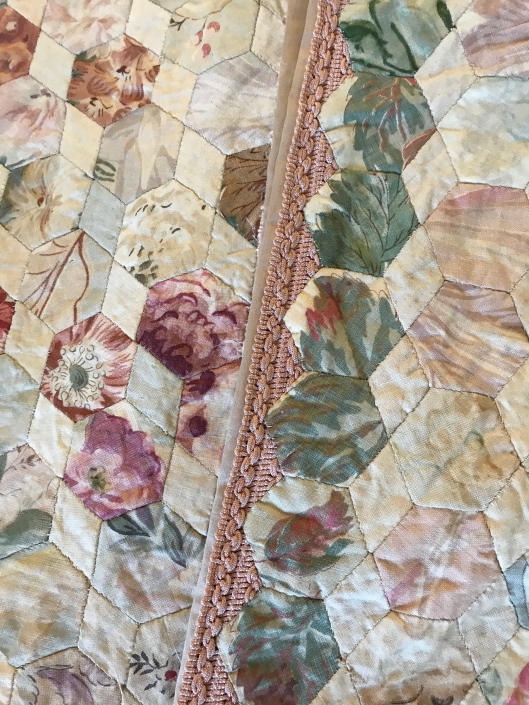



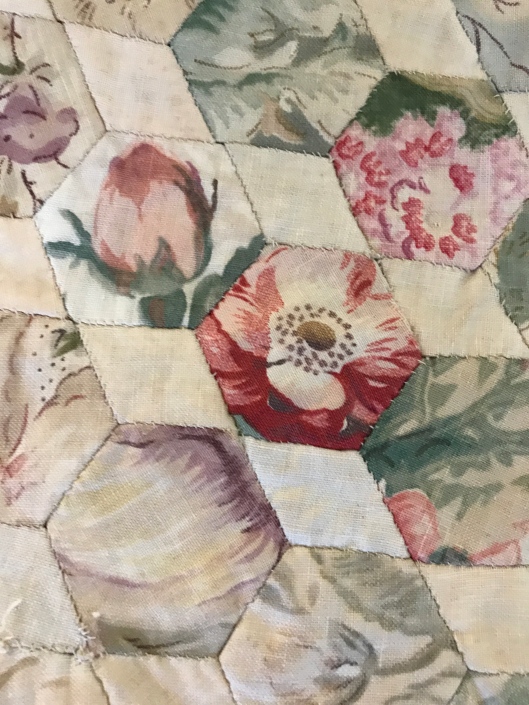

 Patchwork Strippy Quilt
Patchwork Strippy Quilt Quilt Restoration – A Practical Guide by Camille Dalphond Cagnac
Quilt Restoration – A Practical Guide by Camille Dalphond Cagnac



 Turned patches
Turned patches Pinned and ready to appliqué
Pinned and ready to appliqué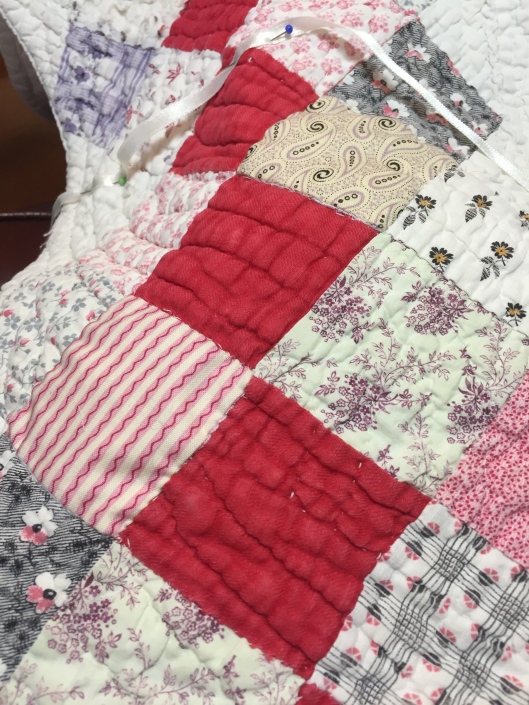 Stitched in place.
Stitched in place.